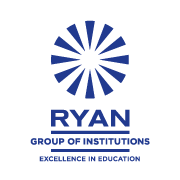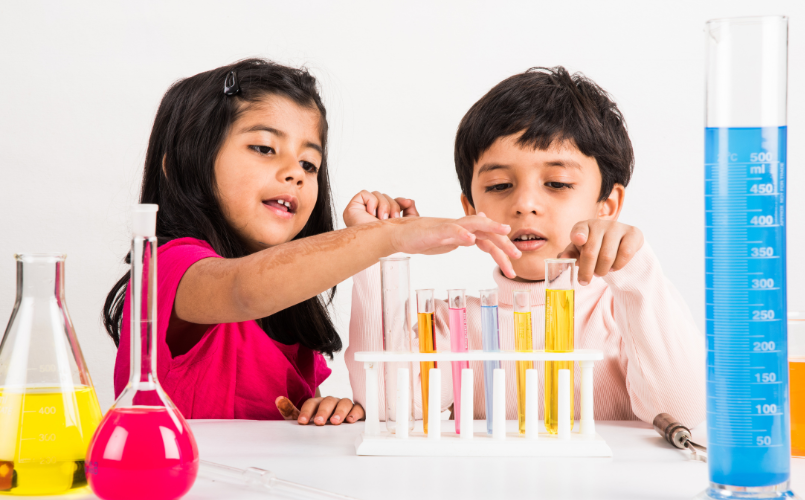In an evolving world that demands dynamic problem-solvers, educators are constantly on the lookout for innovative and effective approaches to teaching. Among these creative teaching methods, Experiential Learning – a process of learning through direct experience – has emerged as a cornerstone of modern education. This creative teaching method takes students beyond the conventional classrooms, plunging them into the heart of real-world scenarios where they learn by doing, observing, and reflecting.
The beauty of Experiential Learning lies in its ability to cater to different learning styles, encouraging students to engage their senses, emotions, and critical thinking skills. It helps learners connect theoretical knowledge with practical application, thus forming an intricate network of understanding and intuition. Furthermore, this learning approach can imbue in them a sense of purpose and relevance, often absent in traditional rote-learning methods.
Experiential Learning & Critical Thinking
When incorporated correctly, Experiential Learning can have profound impacts on a student’s intellectual development. A child who designs and conducts a simple science experiment will grasp the underlying principles more effectively than merely reading about them. A teen participating in a community project will understand societal structures and their role within them better than just studying from a textbook. Such experiences can foster intellectual curiosity, ignite creativity, and instill an enduring love for learning.
Experiential Learning is not just an instructional strategy; it is a philosophical perspective on how we learn. Learning becomes an active, participatory, and reflective process rather than a passive intake of information. It transforms learning from a mere cognitive exercise to an immersive, transformative experience that resonates at a deeper, personal level.
However, the power of Experiential Learning is hinged on its thoughtful integration into the curriculum. This requires understanding the principles that underpin it, mastering the techniques to implement it effectively, and having the flexibility to adapt to the unique needs of each learner.
In the world of education, the famous Chinese proverb
Tell me, and I forget. Teach me, and I remember. Involve me, and I learn.
rings truer than ever. By immersing students in an environment that mirrors the complexity, uncertainty, and excitement of real life, Experiential Learning empowers them to make sense of the world in their own terms. It prompts them to ask questions, seek answers, apply knowledge, and learn from the outcomes – whether they are successes or failures.
Incorporating Experiential Learning in Education
As educators, it is imperative to make learning an experience, not just a task. It’s about designing and facilitating experiences that can stretch students’ understanding, challenge their assumptions, and foster their growth. It is about creating a space where learners are not just consumers of knowledge but are co-creators of their learning journey.
Educators around the globe, have been harnessing the power of Experiential Learning with remarkable results. For instance, a classroom lesson on sustainable agriculture becomes far more meaningful when students visit a local farm, interact with farmers, understand their challenges, and contribute ideas towards sustainable farming practices. Such experiences not only deepen their understanding of the subject matter but also instill empathy, problem-solving, and collaboration skills.
Embracing Experiential Learning does require stepping out of the comfort zones – for both educators and learners. It calls for a shift from a fixed mindset to a growth mindset, from being an instructor to becoming a facilitator, from evaluating learners on standard metrics to assessing them on a broad spectrum of skills and competencies. It is about crafting a learning environment that inspires learners to take ownership of their learning, where mistakes are viewed as stepping stones to progress, and curiosity is the driving force.
The advent of digital technologies has further expanded the possibilities for Experiential Learning. Virtual Reality (VR), Augmented Reality (AR), and AI-based learning platforms can simulate real-world environments and situations, offering experiential learning opportunities that were unimaginable a few decades ago.
Undoubtedly, Experiential Learning is a powerful approach that can profoundly transform teaching and learning. As we continue to explore this captivating realm of pedagogy, let us remember that the ultimate aim of education is not just to fill the minds with knowledge but to ignite the spark of curiosity, creativity, and lifelong learning.
As we delve deeper into the domain of experiential learning, let’s uncover four creative teaching methods that seamlessly blend classroom learning with real-world experiences.
Project-Based Learning
One of the most effective strategies is project-based learning, which engages students in complex, real-world projects where they are challenged to develop and apply skills like problem-solving, critical thinking, and teamwork. For example, students might create a business plan for a hypothetical start-up, weaving together concepts from economics, mathematics, and social studies.
Field Trips
Field trips are a long-standing tradition in experiential learning, providing students with a first-hand encounter of the topics they’re studying. A trip to a historical monument can make lessons from history class come alive, while a visit to a factory can solidify understanding of manufacturing processes in economics or physics.
Internships and Job Shadowing
For older students, internships or job shadowing experiences offer insights into potential careers and allow them to apply classroom learning in professional environments. It gives students the chance to see the practical application of their theoretical knowledge in real-time.
Simulations and Role-Playing
Simulations and role-playing exercises allow students to ‘experience’ scenarios that would be impossible or impractical in real life. They might simulate a UN General Assembly meeting to understand international relations or role-play as characters from a novel to explore literature more deeply.
Incorporating these creative teaching methods in the curriculum makes learning an active, participatory process. It invites students to explore, question, and apply knowledge, ensuring it stays with them long after the class ends. Moreover, it prepares them for the unpredictable, multifaceted challenges of the real world.
These teaching methods have proven to be particularly impactful in contexts ranging from K-12 education to adult learning globally. In India, for instance, an initiative that had students working on a community clean-up and beautification project not only helped them understand environmental science concepts but also fostered civic responsibility and teamwork.
A significant aspect of successfully employing these methods is flexibility. Educators must be willing to adapt to different learning styles, subject matter, and student abilities. Each approach will not be suitable for every situation, and the key lies in discerning the most effective method for each teaching moment.
The use of technology further enhances the potential of these teaching methods. Digital tools and platforms, including VR, AR, and AI-based educational programs, can create simulated real-world experiences, providing access to situations and places students might not otherwise encounter.
The world is our greatest teacher, and when we integrate real-world experiences into our teaching methods, we provide our learners with the opportunity to glean knowledge from it directly. In doing so, we not only make education more engaging but also more meaningful and effective.
Now, more than ever, it is crucial to explore and embrace these creative teaching methods to enrich the educational journey of our learners. So let’s inspire our students to learn from the classroom of life. Here’s an open invitation for you to embark on this enriching journey of Experiential Learning and discover how it can redefine the learning landscape.




